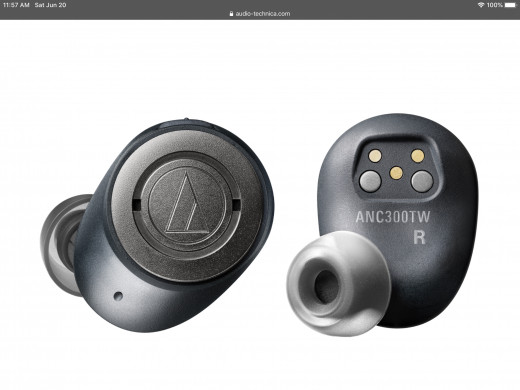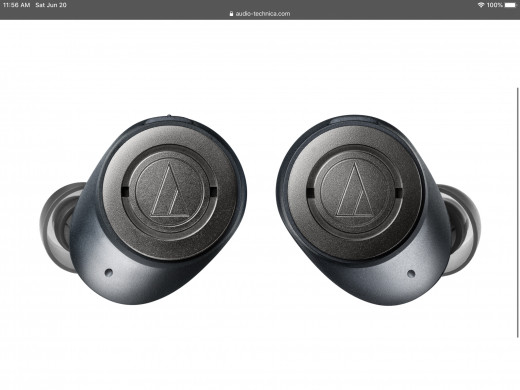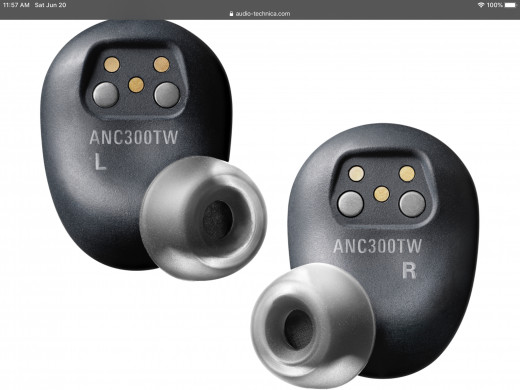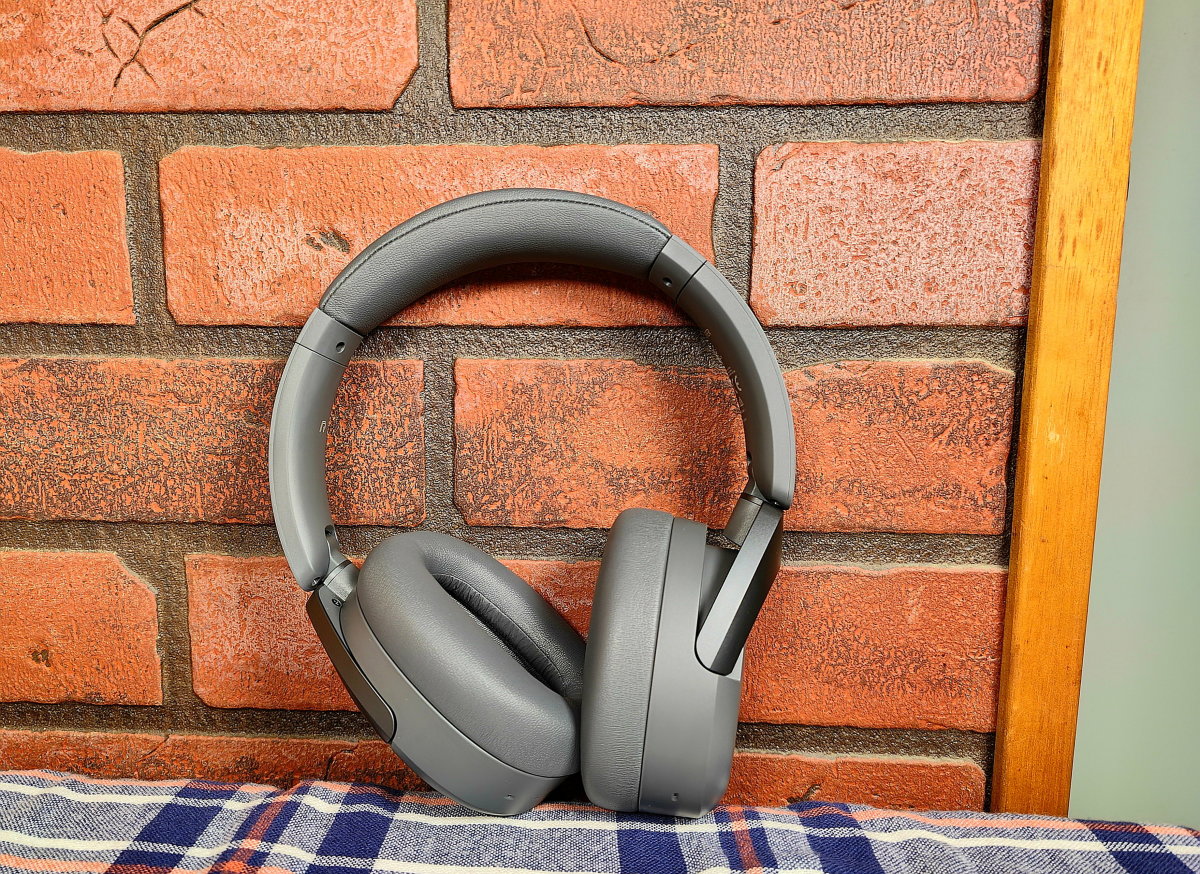Better Sound In Your Ears Courtesy of Audio-Technica’s Quietpoint Wireless Noise-Canceling Headphones

Where That Great Sound Comes From
There are a lot of companies making earbuds these days and the earbuds themselves go under a lot of different names. Today’s earbuds share a lot in common name wise, but certainly not in their actual technology or the impact they make on the music being played through them. So while audio-technica’s Quietpoint Wireless Noise-Canceling Headphones (ATH-ANC300TW) functions in some similar ways to others on the market, what differentiates them from the rest is how they go about doing it.
Starting with the obvious, the QuietPoint are in-ears (i.e., earbuds) that you insert into each ear. There’s multiple silicone ear tips plus a foam-based tip to customize the fit, and the necessary battery in each doesn’t weigh it down to where wearing them are uncomfortable for fair stretches of time(together both in-ears weigh in at 0.5 oz). This comfort in wearing is aided by the curved housing design which fits more naturally in the ear.

Power Those Ears
The battery provides power for roughly up to 4 1/2 hours (time will vary of course), with a charging case able to recharge the in-ears an additional 13 1/2 hours (the case charges via USB). The in-ears automatically power up when they’re removed from the case, with the reverse occurring when they are placed back in (plus they begin to charge). Pairing with a smartphone or tablet or laptop is done in the conventional manner. So of course there’s an app to further the experience through audio settings. Additionally the app enables 3 specific noise-cancelling modes: targeting low-frequency noise (airplane), on-the-go meaning outside (street); ambient noises in quiet environments (an office or a library, etc.).

The Tech For Sound
We’ll get to the sound but there’s still a lot of technology to cover that creates that sound so we go there first: the “heart” of the Quietpoint is the driver (“speaker”) in each in-ear. These drivers are fairly largish in size, being 5.8mm, which allows for a greater response frequency range. This translates into a better audio reproduction coming through the airwaves — because we can’t forget that wireless means the invisible connection between audio source and the QuietPoint needs be stable as well as transmitting a quality signal for the in-ears to send out to the ears (Qualcomm also tosses in some tech to improve the quality of phone calls). As an aid to this transmission (i.e., Bluetooth), the diaphragms of the drivers employ a diamond-like carbon coating. Back on the outside and peeking through are found the expected mobile controls as well as the mic used for talking; here you can use multifunction buttons to control the music playback, initiate a call, etc. There’s even a quick hear through to disable the noise-cancelling so that outside noises become more evident again. And also expected is IPX2 water resistance against splashes and sweat (just don’t drop in a swimming pool and go have lunch).
As to the noise cancelling capabilities, the technology employs now-conventional methods in a non-conventional way. Not 1 but 2 microphones are in each in-ear — this is not for making/taking calls but used to listen/hear the environmental noise surrounding the person at the given time. One mic in front of the driver and the other behind, sound goes into a digital noise-cancel processor (a high-end model to be sure) and then the “counter” sound that works to cancel those sounds go out (the “feedback” mic positions itself perpendicular to the driver so as to most effective use of the interior space within the sound tube.

The Tech of Sound
So yes we’re still going to get to how the QuietPoint sounds, but a good chunk of that comes from the tech working with the Bluetooth for that sound. That tech specifically are the systems digitally dealing with the music from the audio source (mobile device, etc.) and shooting through Bluetooth to the in-ears. For all this to sync up, we go to Qualcomm’s aptX audio and AAC codecs and SBC codecs. Want more? Then grab a low-latency function called Truewireless Stereo Plus (Qualcomm again). What this does is to stream (transmit wirelessly) audio with a “ban” on audio interruptions and to keep the signal playing stable. Of course it doesn’t work with all audio plus it requires that the smartphone/device is compatible. Further compatibility is needed to take advantage of playback protected content streaming through SCMS-T devices via Bluetooth.
The Sound of Sound
Finally we get to how these sound — great is the answer. Of course you had better be playing a high-resolution file because garbage quality isn’t going to improve, but the 20- 25,000 Hz response means business. Bass is well appointed and the mid and higher registers come through clearly without chuff or hesitation. Yes I know listening yourself is the only way to truly appreciate what the audio-technica’s Quietpoint Wireless Noise-Canceling Headphones can do. If you’ve snagged a pair and got them working, you’ll know how to say it better. For more details go to https://www.audio-technica.com/cms/headphones/f039acb060683971/index.html








